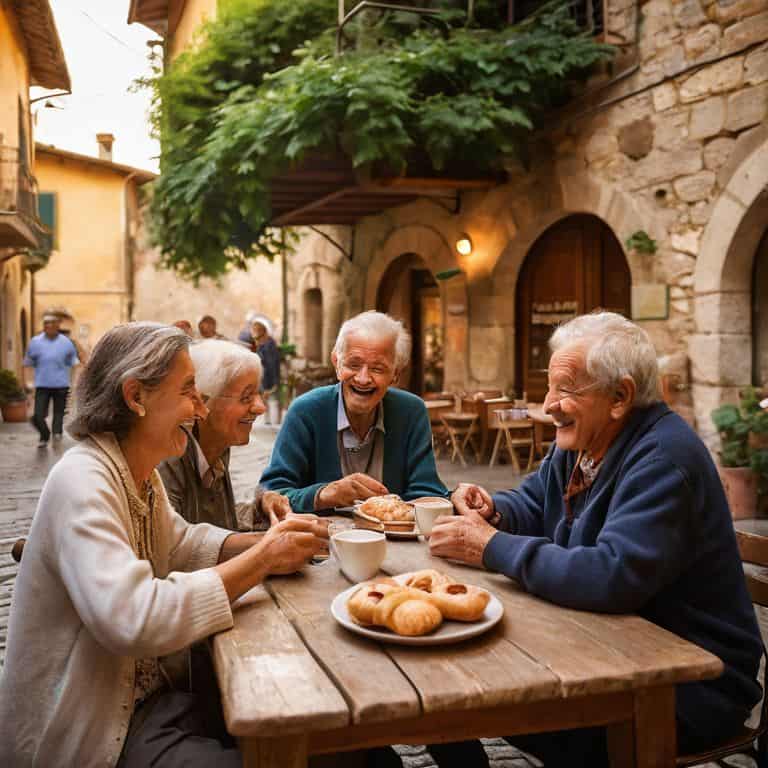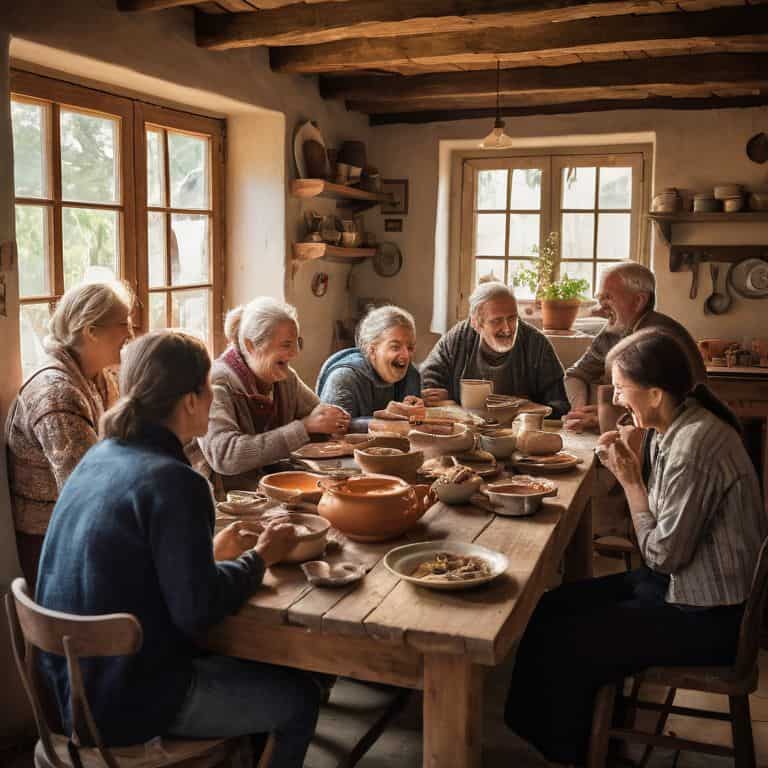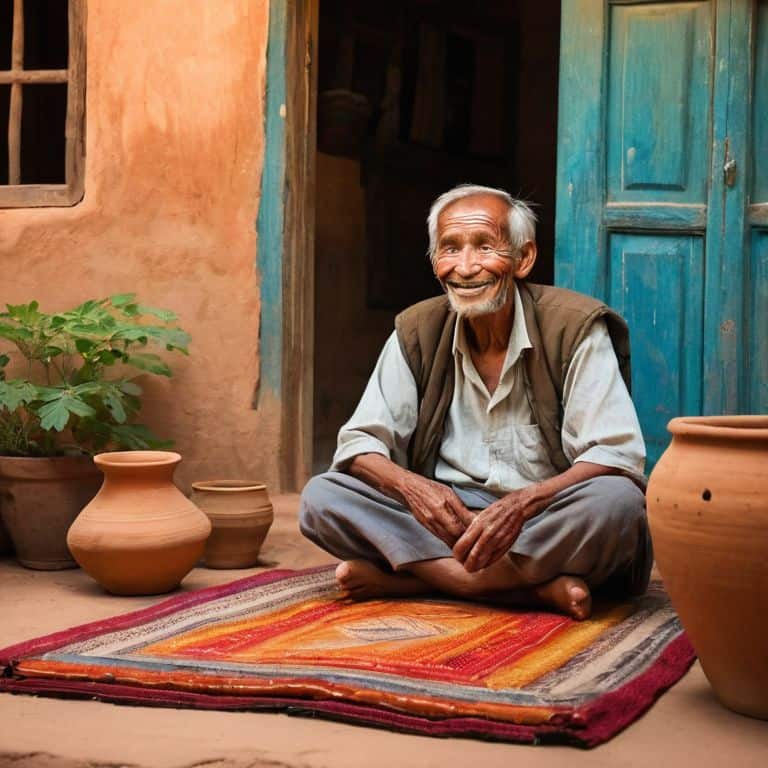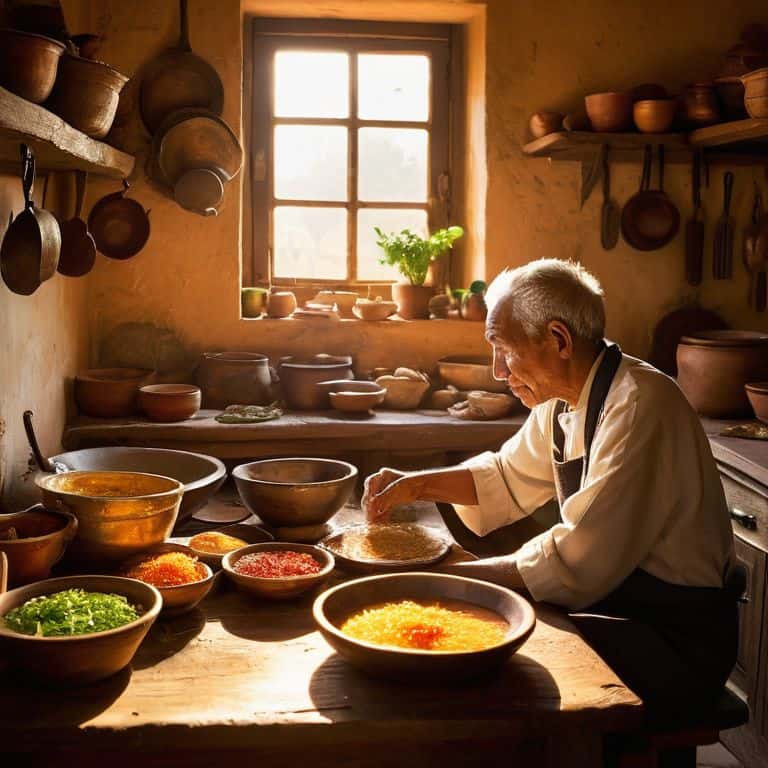I still remember the smell of freshly brewed coffee and the sound of lively chatter at a small café in Tokyo, where I stumbled upon a group of locals engaged in a heated discussion about the best way to prepare matcha. It was one of those cultural immersion experiences that left an indelible mark on my heart, and I’ve been chasing similar moments ever since. But let’s be real, the term “cultural immersion” has become a buzzword, often synonymous with overpriced tours and superficial encounters. I’m here to tell you that there’s more to it than just scratching the surface of a foreign culture.
As someone who’s spent years navigating the nuances of different cultures, I want to share with you my take on what it means to truly immerse yourself in a foreign land. In the following pages, I’ll be sharing honest, experience-based advice on how to dive deeper into the heart of a place, beyond the usual tourist traps and guidebook recommendations. My goal is to inspire you to connect with the soul of a place, to taste the flavors, hear the rhythms, and feel the pulse of a culture that’s waiting to be discovered. I’ll be drawing from my own experiences as a translator, guide, and storyteller to provide you with a more meaningful and less superficial way of exploring the world.
Table of Contents
- Cultural Immersion Experiences
- Authentic Encounters Abroad
- Indigenous Community Tours for Cultural Sensitivity
- Rural Village Stays and Traditional Cooking Classes
- Diving Deeper: 5 Tips for Authentic Cultural Immersion Experiences
- Embracing the Essence of Cultural Immersion
- The Heart of Cultural Immersion
- Embracing the Essence of Cultural Immersion
- Frequently Asked Questions
Cultural Immersion Experiences

As I reflect on my journeys, I realize that the most profound connections I’ve made with a place have been through community based tourism projects. These initiatives not only support local economies but also provide a glimpse into the daily lives of the people who call that place home. I recall a rural village stay in a small town in Italy, where I participated in a language exchange program abroad and learned the nuances of the local dialect from the town’s elderly residents. It was a truly immersive experience that allowed me to forge deep bonds with the community.
One of the most effective ways to immerse oneself in a foreign culture is by engaging in traditional cooking classes. Not only do these classes provide an opportunity to learn about local ingredients and culinary techniques, but they also offer a chance to connect with the people who have spent their lives perfecting these recipes. I’ve had the privilege of taking cooking classes in various parts of the world, from Japan to Brazil, and each time, I’ve been struck by the cultural sensitivity that these classes instill in their participants.
In my travels, I’ve also had the privilege of participating in indigenous community tours, which have been truly eye-opening experiences. These tours, led by local guides, provide a unique perspective on the history, traditions, and daily life of indigenous communities. By supporting these tours, travelers can contribute to the preservation of local cultures and ways of life, while also gaining a deeper understanding of the world’s diversity.
Beyond Tourist Trails Community Based Tourism
As I wandered through the narrow streets of a small village, I stumbled upon a community that embodied the spirit of authentic connection. It was a place where locals and visitors could come together, share stories, and break bread. The air was filled with the aroma of freshly baked bread and the sound of laughter, creating an atmosphere that was both welcoming and intimate.
In this setting, community-based tourism thrived, allowing travelers to experience the daily life and traditions of the local people. I watched as visitors learned traditional crafts, participated in cooking classes, and even helped with the harvest, forging bonds that went beyond the typical tourist experience.
Language Exchange Programs for Deeper Connections
As I sit in a small café, surrounded by the gentle hum of conversation, I’m reminded of the power of language to break down barriers and forge connections. Language exchange programs offer a unique opportunity to delve deeper into the fabric of a community, to move beyond the surface level and into the intricacies of daily life.
Through immersive conversations, I’ve found that language exchange programs can be a powerful tool for cultural immersion, allowing participants to tap into the rhythms and nuances of a place in a way that feels authentic and meaningful.
Authentic Encounters Abroad

As I sat in the rural village, surrounded by the warm smiles of my hosts, I realized that authentic connections are the backbone of any meaningful journey. It’s not just about visiting a place, but about becoming a part of it, if only for a little while. I had stumbled upon this hidden gem through a language exchange program, which allowed me to immerse myself in the local dialect and customs. The experience was nothing short of transformative, as I found myself weaving in and out of conversations with the villagers, sharing stories and laughter around the kitchen table.
My days were filled with traditional cooking classes, where I learned the intricacies of local cuisine and the art of preparing meals from scratch. The aromas and flavors that wafted from the kitchen were a sensory delight, and I found myself feeling like a part of the family as we sat down to share meals together. It was during these moments that I felt a deep sense of community based tourism, where the focus was on people, not just places.
As I reflect on my time in the village, I am reminded of the importance of cultural sensitivity training in creating meaningful encounters. By taking the time to understand and respect the local customs and traditions, I was able to forge connections that went beyond the surface level. Whether it was through a homemade meal or a lively conversation, I knew that I had truly experienced the heart and soul of the place, and that was a gift that I would carry with me forever.
Indigenous Community Tours for Cultural Sensitivity
As I wandered through the vibrant markets and lush landscapes, I stumbled upon an indigenous-led tour that changed my perspective on cultural sensitivity. It was a refreshing departure from the typical tourist trails, where locals were more than just friendly faces – they were guardians of ancient traditions and stories. Our guide, a warm and wise elder, shared with us the secrets of the land, from the medicinal properties of native plants to the intricate patterns woven into traditional textiles.
In those moments, I felt a deep connection to the land and its people, one that went beyond mere observation. The tour was a masterclass in cultural humility, teaching us to listen, to observe, and to respect the delicate balance between tradition and modernity. As we sat around the fire, sharing stories and laughter, I realized that true cultural immersion is not just about experiencing a new place, but about being a respectful guest in someone else’s home.
Rural Village Stays and Traditional Cooking Classes
As I wander through the rolling hills and quaint villages, I find myself drawn to the authentic rhythms of rural life. Staying in village homestays, I’ve had the chance to experience the warm hospitality of local families, sharing meals and stories that feel like a glimpse into a forgotten era. The smell of freshly baked bread wafts through the air, mingling with the sound of laughter and chatter, creating an atmosphere that’s hard to find in urban centers.
In these village stays, I’ve also had the opportunity to take part in traditional cooking classes, learning the secrets of local cuisine from the women who have spent their lives perfecting these recipes. The process is just as important as the end result, with each ingredient and technique revealing a piece of the region’s history and culture.
Diving Deeper: 5 Tips for Authentic Cultural Immersion Experiences
- Let the locals be your guide: Instead of relying on generic guidebooks, ask the people you meet for recommendations on hidden gems and off-the-beaten-path destinations
- Learn a few key phrases in the local language: It’s amazing how a simple ‘hello’ or ‘thank you’ can break the ice and lead to meaningful connections with the people you meet
- Immerse yourself in local cuisine: Food is a universal language, and cooking classes or homestays can be a great way to experience the authentic flavors and traditions of a place
- Attend local festivals and events: There’s no better way to experience the vibrant culture of a place than by attending a local festival or celebration, where you can meet people and learn about their customs and traditions
- Slow down and be present: Cultural immersion is about more than just checking off a list of sights to see – it’s about taking the time to truly experience and appreciate the people, food, and customs of a place, so be sure to slow down and soak it all in
Embracing the Essence of Cultural Immersion

I’ve learned that the true magic of cultural immersion lies not in visiting landmarks, but in sharing meals, stories, and laughter with the people who call a place home
By stepping away from tourist trails and into the heart of local communities, we can forge connections that transcend borders and languages, and uncover the hidden rhythms that make a place truly alive
Whether through language exchange programs, rural village stays, or traditional cooking classes, the key to authentic encounters abroad is to approach each experience with an open heart, a willingness to listen, and a passion for the beauty of the unknown
The Heart of Cultural Immersion
Cultural immersion isn’t just about stepping into someone else’s world; it’s about letting that world seep into your soul, until the rhythms of a foreign market become the beat of your heart, and the flavors of a homemade meal become the taste of home.
Anika Sharma
Embracing the Essence of Cultural Immersion
As I reflect on my journeys, I’m reminded that cultural immersion experiences are not just about visiting new places, but about embracing the unknown and allowing ourselves to be transformed by the people and traditions we encounter. From community-based tourism initiatives to language exchange programs, rural village stays, and indigenous community tours, each experience has taught me that the true beauty of a culture lies not in its landmarks, but in the stories and traditions that are woven into the fabric of everyday life. By venturing beyond the tourist trails and into the heart of a community, we can gain a deeper understanding of the world and our place within it.
As we embark on our own journeys of cultural immersion, let us remember that the greatest rewards often lie in the unplanned moments: a spontaneous invitation to share a meal, a chance encounter with a local artisan, or a quiet moment of reflection in a secluded village. It is in these moments that we can truly connect with the soul of a place, and carry its essence with us long after we’ve left its borders behind. By embracing this mindset, we can transform our travels into a journey of self-discovery and return home with a newfound appreciation for the beauty and diversity of our global community.
Frequently Asked Questions
How can I ensure that my cultural immersion experience is respectful and beneficial to the local community?
To ensure a respectful and beneficial experience, I always research local customs and traditions beforehand, and engage with community-led initiatives that prioritize mutual exchange and fair compensation. It’s about listening, learning, and contributing, not just observing – that way, we can foster genuine connections and support the local economy in a meaningful way.
What are some common challenges or obstacles that travelers may face during cultural immersion experiences, and how can they be overcome?
As I’ve navigated the twists and turns of cultural immersion, I’ve found that language barriers, unfamiliar customs, and feelings of isolation can be daunting obstacles. But with an open heart, a willingness to learn, and a dash of humility, these hurdles can become bridges to deeper understanding and connection.
Are there any specific skills or preparation that I need to have before participating in a cultural immersion experience, such as language proficiency or cultural knowledge?
While language proficiency can be helpful, it’s not always necessary – many hosts and communities welcome learners. What’s more important is a willingness to listen, learn, and be open-minded. A basic understanding of cultural norms and traditions can also be useful, but don’t worry if you’re not an expert – the beauty of cultural immersion lies in its unpredictability and the opportunity to learn as you go.
